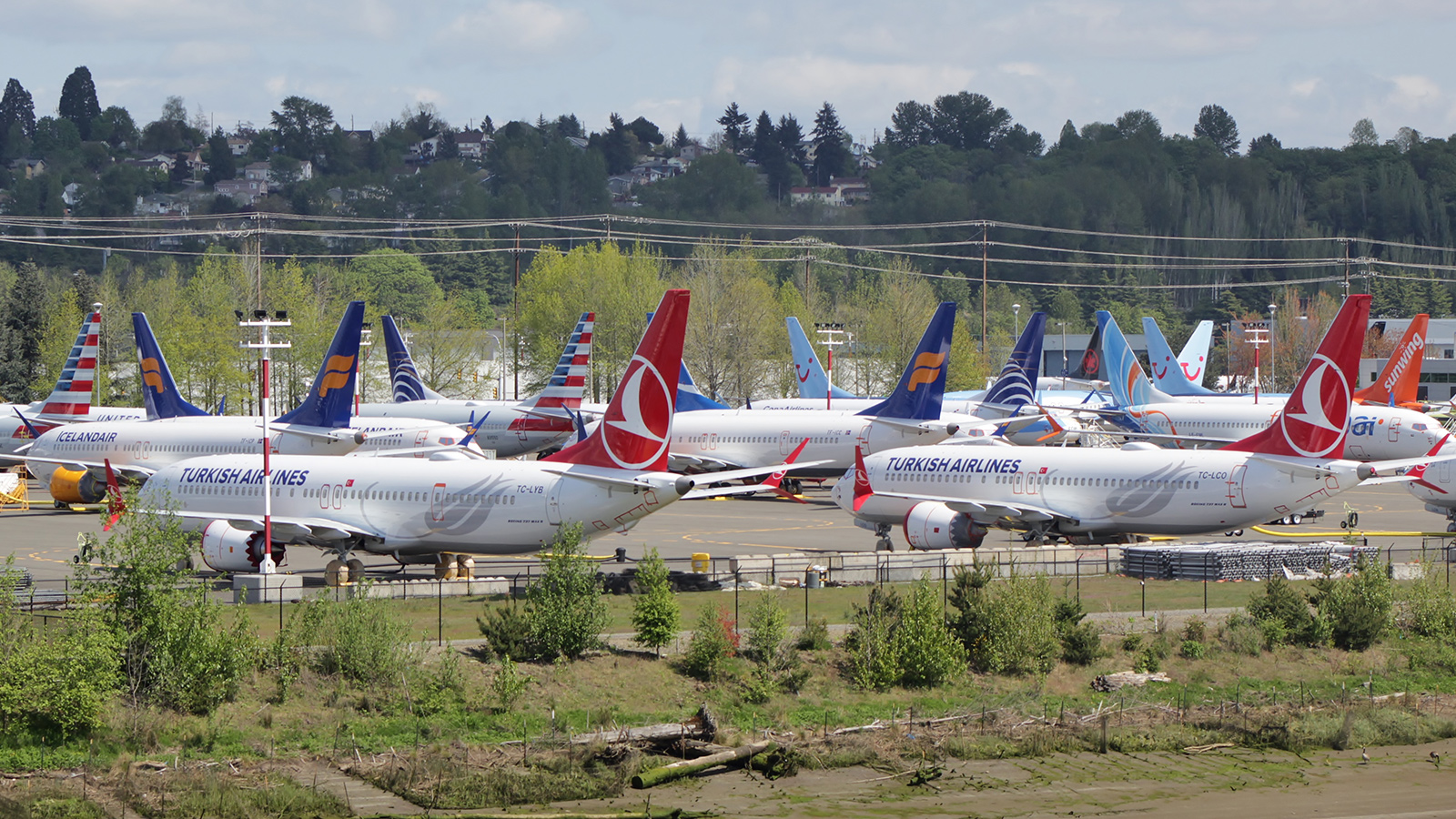Stay Up to Date
Submit your email address to receive the latest industry and Aerospace America news.
U.S. lawmakers continue to press for details about how the jets were certified
A previously unreleased FAA analysis completed after the crash in Indonesia of a Boeing 737 MAX, but before a second crash five months later in Ethiopia, warned of “as many as 15 future fatal crashes within the life of the fleet,” Rep. Peter DeFazio, D-Ore., said during a hearing Wednesday.
FAA Administrator Steve Dickson, the main witness at the hearing, defended the FAA’s decision not to immediately ground the planes when the report was completed in December 2018 following the crash in late October. The agency believed that an emergency airworthiness directive published within days of the Indonesia crash sufficed. “Immediate aggressive action was being taken,” he said.
Dickson was referring to the directive that cautioned pilots to brush up on procedures for coping with an uncommanded nose-down scenario. The directive did not mention MCAS, the Maneuvering Characteristics Augmentation System now implicated in both crashes, and the FAA did not ground the planes until three days after the second crash, in March of this year.
DeFazio revealed the existence of the report during a hearing of the House Transportation Committee, which has been investigating the certification of the MAX in the wake of the crashes that killed 346 and prompted the worldwide grounding of the aircraft.
“I don’t know why this airplane wasn’t grounded after the analysis was done,” DeFazio said.
The report looked at the ability of flight crews to handle the scenario that arose in the October 2018 Lion Air crash in Indonesia and the March 2019 Ethiopian Airlines crash outside Addis Ababa. In each crash, the crew struggled in vain to regain control of the aircraft after the MCAS software erroneously activated due to faulty readings from an angle-of-attack sensor.
“Despite its calculations, FAA rolled the dice on the safety of the traveling public and let the MAX continue to fly until Boeing could overhaul its MCAS software,” Defazio said.
Dickson repeatedly defended FAA’s oversight of the MAX during Wednesday’s hearing as lawmakers of both parties pressed him on the certification process that originally cleared the aircraft.
The FAA administrator said the certification process is “not broken,” but acknowledged that “what we have done in the past and what we are doing now will not be good enough in the future.”
The certification process has come under fire from lawmakers in the aftermath of the Lion Air and Ethiopian Airlines crashes, particularly the Organization Designation Authorization, or ODA, program. Under ODA, the FAA streamlines certification by delegating employees of companies like Boeing to sign off an aspects of an aircraft’s design.
This time around, the FAA won’t be “delegating anything to Boeing” as the agency works to recertify MCAS and return the MAX to service, Dickson said. He repeated the steps that need to be taken before the planes are permitted to start carrying passengers again: The FAA must sign off on a software fix for MCAS that has been submitted by Boeing; FAA pilots need to complete a certification flight test with that new software; FAA must decide whether to approve Boeing’s recommendations for updated pilot training.
Dickson cautioned lawmakers that the solution to preventing future crashes lies in examining the “overall aviation system and how all the pieces interact.”
“Focus on a single factor will lead us to miss opportunities to improve safety that come from regulators and industry raising the bar not just in certification, but in maintenance and training procedures,” Dickson added.
Rep. Sam Graves, R-Mo., the top Republican on the committee, said: “We have to fix the [certification] system, whatever needs to be upgraded, but I do think we need to be very cautious moving forward.”
He said he wants to hear from the FAA officials who were in charge “between 2012 and 2017” when the MAX was being certified.
“Until we hear from the officials in charge at the time, the majority’s investigation remains incomplete at best and at worst looks as if they are willing to overlook the past administration’s culpability in the matter,” he said.
About cat hofacker
Cat helps guide our coverage and keeps production of the print magazine on schedule. She became associate editor in 2021 after two years as our staff reporter. Cat joined us in 2019 after covering the 2018 congressional midterm elections as an intern for USA Today.
Related Posts
Stay Up to Date
Submit your email address to receive the latest industry and Aerospace America news.




